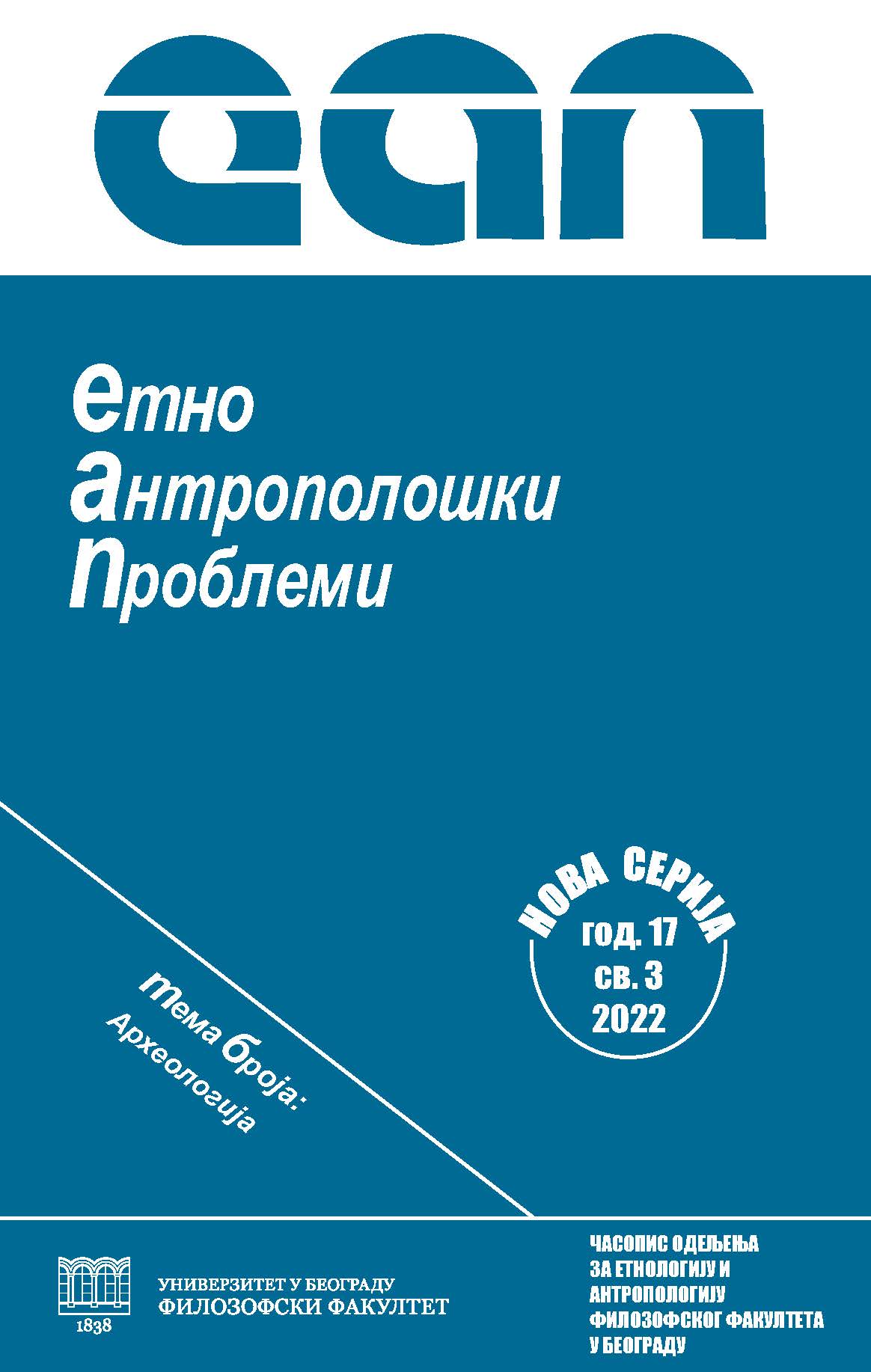Arheološki tragovi nehrišćanskih obreda u srpskom delu Podunavlja tokom srednjeg veka
Archaeological Evidences of The Non-Christian Rituals in The Serbian Part of The Danubian Region During The Middle Ages
Author(s): Perica Špehar, Bojana ZorićSubject(s): History, Archaeology
Published by: Филозофски факултет, Универзитет у Београду
Keywords: medieval period; Serbian part of the Danubian region; Christianization; building deposit
Summary/Abstract: In the settlement strata dated to the 12th and 13th centuries, within three Byzantineborder forts along the Serbian part of the Danubian region (Morava,Braničevo and Egeta), ritual bird offerings that preceded the erection of variousbuildings were archaeologically testified. Namely, whole ceramic vessels wereplaced upside down in pits and within them were the skeletal remains of chickenof various ages. Magic power of the ritual was additionally amplified by otherofferings, such as iron knives and nails, while on one occasion small glass amorphousobjects were likewise detected.Numerous similar examples of building deposits were detected all over Europeduring the 12th and 13th centuries. Since mentioned rituals were tied to folkbeliefs that, unlike the official religion, didn`t have strict norms, numerous variationsoccurred. For example, vessels were mainly placed upside down, butsome were placed on their bottoms and covered with fragment of another ceramicvessel. Considering sacrificed animals, they were mostly hens and roosters,as well as gees and pond birds, sometimes eggs, pikes, dogs or cats, and themagic power was likewise amplified by diverse additional offerings. Practicingthe said ritual was always tied to the turbulent times.It is interesting to notice that, on the central Balkans, there are no archaeologicaltraces of this ritual during the period from the late 5th to the early 7thcentury. That was the time when firm church organization functioned in thisarea and Christian customs were strictly obeyed. The collapse of the Byzantinestate at the beginning of the 7th century, as well as settling of new peoples, led tothe abandonment of Christian customs or their arbitrary interpretation and implementation.Therefore, during the early medieval period on the territory of theSerbian part of the Danubian region, the sacrificing of animals when erectingthe buildings offen occured.The re-establishing of the Byzantine rule on the central Balkans at the beginningof the 11th century led to the definite embedment of Christianity and abandonmentof pagan elements in funerary practice. Still, during the turbulent 12thcentury, marked by intensive conflicts between Byzantium and Magyars in theSerbian part of the Danubian region, the practice of non-Christian rituals whenburying of building deposits, occurred once again. Wishing to secure safety,peace and salvation during the times of crisis, the Christian community reachedout not only for God`s intervention, but also for help of other „greater forces“.Although the character of folk beliefs and Christian norms of official churchwere, on the first sight, diametrically opposed, one should bear in mind the factthat during the Middle Ages folk belief wasn’t in complete contrast to the Christianity.Namely, pre-Christian and Christian elements were not two confrontedsides, but they both shaped the beliefs within Christian communities. Consideringthe fact that in both cases the adherence to certain norms of behaviour is actuallybased on personal beliefs of each individual, the choice of what someonewill believe in, is closely tied to challenges of that particular historical momentand to his/hers choice of rituals that he/she believes would provide help.
Journal: Етноантрополошки проблеми
- Issue Year: 17/2022
- Issue No: 3
- Page Range: 985-1009
- Page Count: 25
- Language: Serbian

